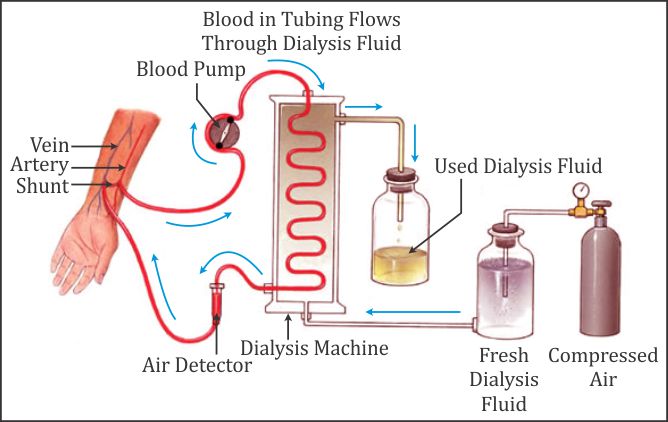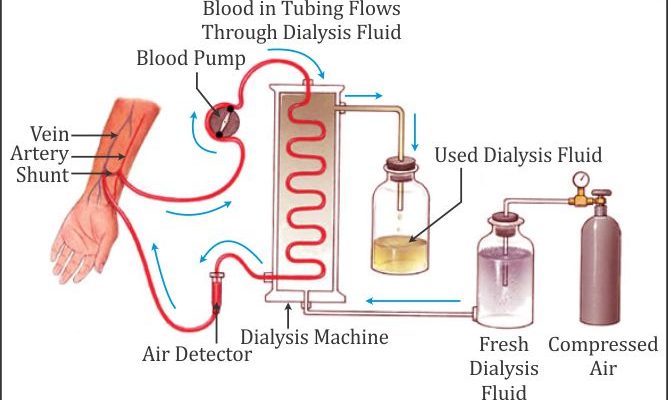What is Dialysis or Haemodialysis
- Dialysis is an artificial process used to remove water and waste substances from the blood when the kidneys fail to function properly.
- The word “HAEMO” refers to blood. Hemodialysis is a method for removing waste products such as potassium and urea, as well as free water from the blood when the kidneys are in renal failure.
- The blood travels outside the body through tubing and passes through a filter of the dialysis machine.
- The filter cleans the blood and the clean blood is returned to your body.
Also Check – Function of Kidney
Working Principle of Dialysis

- Dialysis works on the principles of the diffusion of solutes and ultrafiltration of fluid across a semipermeable membrane.
- Diffusion describes a property of substances in water. Substances in water tend to move from an area of high concentration to an area of low concentration.
Also Check- What is the Difference Between Natural Kidney And Artificial Kidney ?
Why Is Dialysis (Haemodialysis) Necessary?
- Approximately 1.5 liters of blood are filtered by a healthy person’s kidneys each day.
- We could not live if waste products were not removed from our kidneys.
- Without dialysis the amount of waste products in the blood would increase and eventually reach levels that would cause coma and death.
Also Check-What is Artificial Kidney
Functions of Dialysis (Haemodialysis)
- Cleanses the blood of accumulated waste products.
- Removes the by-products of protein metabolism such as urea, creatinine, and uric acid.
- Removes excessive fluids.
- Maintains or restores the buffer system of the body.
- Maintains or restores electrolyte levels.

